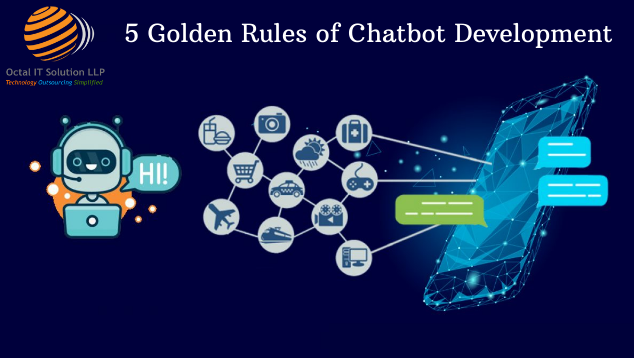Chatbots are gaining ground: they are used by hundreds of websites and web stores and are now available on Messenger. Are you planning to introduce it too? These should be taken into account when creating your own chatbot.
What is a chatbot good for?
With the help of chatbots, a new form of communication opens up for companies, as users can contact the company in this way. However, compared to previous one-sided options (such as e-mail, which do not necessarily receive an immediate response), a chatbot can significantly enhance the user experience, as the visitor can get an immediate answer to their question.
It’s also worth considering that in today’s world when big business is rushing people with a plethora of ads and commercials, the chatbot provides an opportunity to communicate with each user individually instead of in bulk. In fact, we already have very sophisticated advertising techniques and targeting options that will most likely really reach our target audience. Yet it builds greater trust and commitment when an artificial intelligence like a person, knowing the client’s circumstances, communicates with him in a personalized way, and helps him achieve his goals. And you don’t even need a lot of customer service, just a well-developed chatbot.
What to look for when creating a chatbot?
Because of the above, a chatbot is not only an excellent communication opportunity to reach out to our existing or future clients, but it also becomes part of the company’s brand. That is why it is worth paying special attention to.
We’ve put together 5 tips to help you create a chatbot that best suits your goals and even your customers will like it.
1. Know what your purpose is with the chatbot
Before you start anything, ask yourself the question: what will customers use the stick for? This is because there are several types of chatbots, and among other things, the goal will determine which one to choose.
Chatbot:
This chatbot has a single purpose: to chat with the client. However, we do not recommend this type to anyone, as it takes a lot of development as well as invested work and time to equip the stick with the necessary skills to be able to talk about anything.
Search bot:
This type of chatbot helps the user to find certain information (either within the website or throughout the Internet). The difference between this and a plain search engine is that the user gets the right information in the form of a conversation instead of a list of results. It can be an ideal solution for webshops.
Complex stick:
A complex stick has both of the above capabilities. To make one of these requires a great deal of expertise and developer knowledge.
As you can see, it doesn’t matter at all how we stand for chatbot development. First, always have an idea of what you’re going to use it for when you’re done. Then there may be…
2. The design
It is not enough to know what your chatbot will be used for. You also need to find out how real users will use it – this will determine the user interface and design. The most important thing is testing: outline each option, what customers can say, what questions they can ask the chatbot. The right design will help you with this. Once you have what your goal is and have designed the user experience, only then get on with it for development work.
3. What will the personality of the bot be like?
It is a very important question of what personality you endow your chatbot with. The relationship between the bot and the user can also be the key to a company’s success. Therefore, it is essential to give the stick a personality that inspires confidence in whoever communicates with it. Therefore, you need to figure out how to address the bot to the user. Another also very important aspect is to never lie to your customers: don’t claim to be talking to a real employee when in reality there is only one chatbot on the “other side.” Last but not least, your chatbot should reflect the style and personality of your brand. For example, a chatbot that glorifies the user while you are consistently dealing with them on the website can have an amateur effect.
4. What can the chatbot give you?
Keep the user in mind – but don’t forget about your own goals either. Chatbots are perfect for collecting data about your users. Therefore, before you start the actual development, be sure to determine what data you are curious about your customers. Do men or women prefer your customers? Ask the chatbot or draw a conclusion based on the answers! Do you have a webshop and want to survey your customers ’shopping habits? The chatbot also solves it. Show the customer different products and ask which one they like best.
With this data, you can not only create valuable and interesting statistics about your interested parties but when one of them visits the site again later, you can provide even more personalized offers and information. So before you build a chatbot on the site, write down what data you need to collect.
5. Planning, planning, planning
And now we were thinking primarily about the implementation and the marketing of the chatbot. Many make the mistake of thinking about this only when the development is complete. Yet if you don’t have a plan after the chatbot is done, it could easily be a futile development as you simply can’t reach the right target audience with it.
So it is very important that you determine who your audience is and who will communicate with your chatbot (and of course this is also important when you are planning the tone and personality of your bot). Take a look at your marketing tools so far: above or already on one of the social sites? Do you already have an audience to whom you can advertise your new service? If you don’t already have or already have, but would like to reach more people, determine who they should be and it’s worth thinking about running paid ads.
Start small first, gauge market interest, feel free to ask users what they would like. This way, you can not only take advantage of the opportunities offered by advertisements, but you can also improve your chatbot based on reviews.
Is everything ready?
Then there’s nothing left to do: create your own chatbot and watch your customers use it more and more confidently and as less and less burden is placed on customer service.



